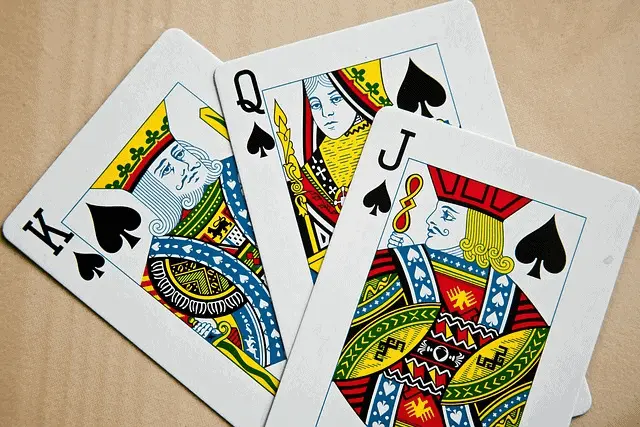In short,
A standard deck of 52 cards contains 12 face cards. Each suit (hearts, diamonds, clubs, spades) includes 3 face cards: Jack, Queen, and King. Therefore, with 4 suits in a deck, the total number of face cards is 1212.In summary:
- Hearts: Jack, Queen, King
- Diamonds: Jack, Queen, King
- Clubs: Jack, Queen, King
- Spades: Jack, Queen, King
Face cards are a special type of cards that have a human face on them. They are often used in card games to represent high-ranking or powerful cards. In this article, we will explore the concept of face cards, how many of them are in a standard deck of 52 cards, how a deck is structured, and why face cards are important in some card games.
Definition of Face Cards
A face card is a card that has a picture of a person’s face on it, usually a historical or mythical figure. There are three types of face cards in a standard deck of 52 cards: Jacks, Queens, and Kings. Each type has four cards, one for each suit: clubs, diamonds, hearts, and spades. The Jacks are the lowest-ranking face cards, followed by the Queens, and then the Kings. The face cards are also known as court cards, royal cards, or picture cards.
Number of Face Cards in a Deck
There are 12 face cards in a standard deck of 52 cards. This number can be derived by multiplying the number of types of face cards (3) by the number of suits (4). Alternatively, it can be calculated by subtracting the number of non-face cards (40) from the total number of cards (52). The non-face cards are the cards that have numbers or symbols on them, such as Aces, Twos, Threes, and so on.
Structure of a Deck
A standard deck of 52 cards is divided into four suits: clubs, diamonds, hearts, and spades. Each suit has 13 cards, ranging from Ace to King. The Ace is the lowest-ranking card in each suit, followed by the numbered cards from Two to Ten, and then the face cards from Jack to King. The Ace can also be used as the highest-ranking card in some card games, such as poker. The four suits are also divided into two colors: black and red. The clubs and spades are black, while the diamonds and hearts are red. The color of the suit does not affect the rank of the card, unless specified by the rules of the game.
The face cards are distributed evenly across the four suits, meaning that each suit has one Jack, one Queen, and one King. The table below shows the structure of a standard deck of 52 cards, with the face cards highlighted in bold.
| Suit | Color | Cards |
|---|---|---|
| Clubs | Black | A, 2, 3, 4, 5, 6, 7, 8, 9, 10, J, Q, K |
| Diamonds | Red | A, 2, 3, 4, 5, 6, 7, 8, 9, 10, J, Q, K |
| Hearts | Red | A, 2, 3, 4, 5, 6, 7, 8, 9, 10, J, Q, K |
| Spades | Black | A, 2, 3, 4, 5, 6, 7, 8, 9, 10, J, Q, K |
Importance of Face Cards in Card Games
Face cards are often considered to be valuable or influential cards in many card games. They can have different roles and effects depending on the game and the rules. For example, in poker, face cards are among the highest-ranking cards that can form winning hands, such as pairs, two pairs, three of a kind, straight, flush, full house, four of a kind, straight flush, and royal flush. A royal flush is the best possible hand in poker, and it consists of the Ace, King, Queen, Jack, and Ten of the same suit. In blackjack, face cards are worth 10 points each, and they can help the player or the dealer reach the target of 21 points or close to it. In rummy, face cards are worth 10 points each, and they can be used to form sets or runs with other cards of the same rank or suit. In bridge, face cards are used to evaluate the strength of a hand and to bid for the contract. The Jack is worth 1 point, the Queen is worth 2 points, the King is worth 3 points, and the Ace is worth 4 points.
Conclusion
Face cards are an integral part of a standard deck of 52 cards. They have a distinctive appearance and a high rank in most card games. There are 12 face cards in a deck, divided into three types: Jacks, Queens, and Kings. Each type has four cards, one for each suit: clubs, diamonds, hearts, and spades. A deck is also structured into four suits, each with 13 cards, and two colors, black and red. Face cards are important in card games because they can determine the outcome of the game, the value of the hand, or the strategy of the player. Understanding the number and role of face cards in a deck can help improve one’s skills and enjoyment of card games.
